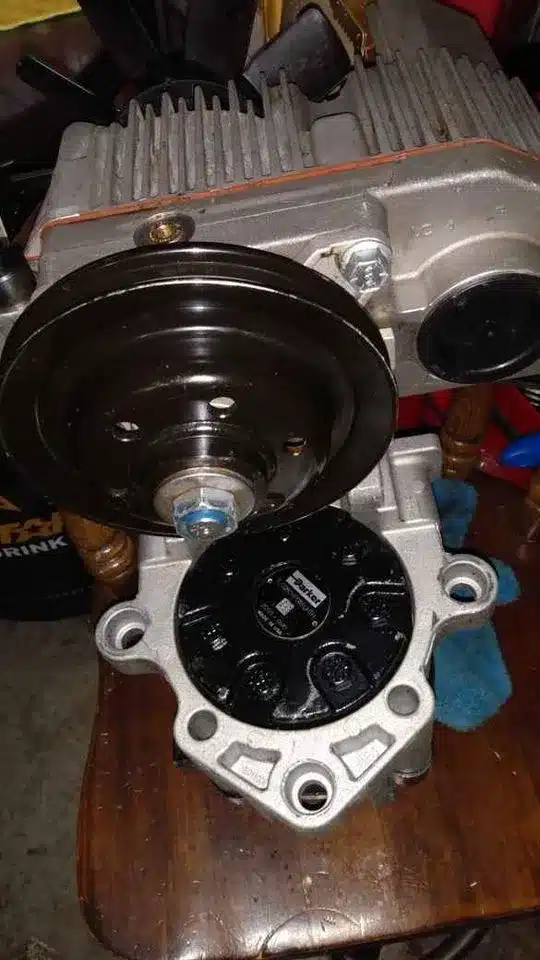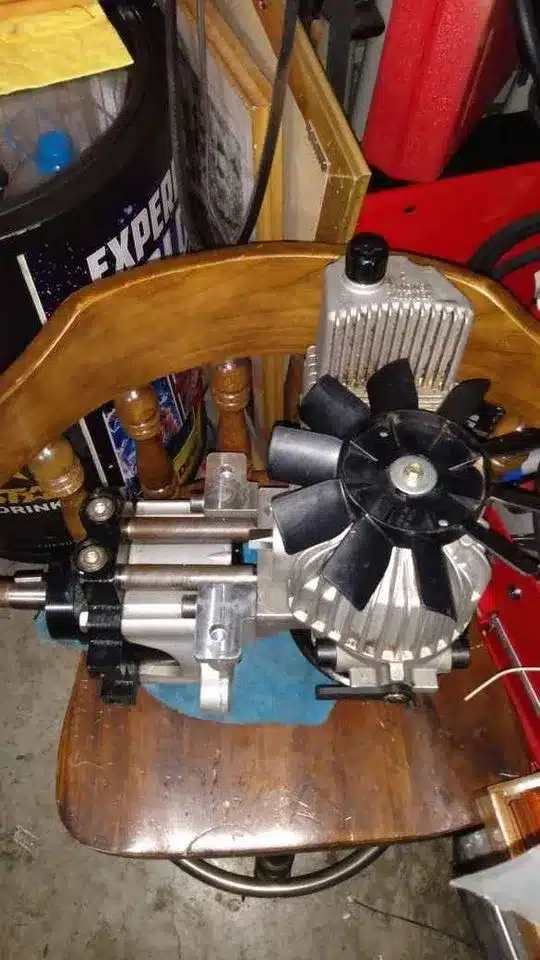As a seasoned expert in mechanical troubleshooting, particularly with Cub Cadet zero turn mowers, I understand the intricacies of hydrostatic transmission problems.
My experience enables me to identify and resolve issues efficiently, ensuring your equipment maintains its performance.
This article will provide you with actionable insights and preventative measures to avoid hydrostatic transmission setbacks, drawing on my in-depth knowledge. Trust in my expertise as we delve into solutions that will keep your mower running optimally.
Continue reading to benefit from the valuable information contained in this blog post.
Key Takeaways
- The article addresses various hydrostatic transmission issues in Cub Cadet zero-turn mowers, including pump failure, air contamination, hydraulic system overheating, cold hydraulic system malfunction, and fluid contamination.
- Regular maintenance, including purging air from the system and ensuring proper fluid viscosity, is essential for preventing and resolving hydrostatic problems.
- Proper maintenance can reduce machinery failure rates by up to 25%, highlighting its significance in preserving the functionality of zero-turn mowers.
- From my experience, proactive maintenance and timely problem-solving significantly enhance the performance and longevity of Cub Cadet zero-turn mowers.
Cub Cadet Zero-Turn Hydrostatic Problems and Solutions
I’ve run into a snag with my Cub Cadet’s zero turn hydrostatic system, and it’s clear I’m not alone.
From pump failures to overheating, these issues can be a real headache.
Let’s tackle the common Cub Cadet problems and their fixes, ensuring our mowers are running smoothly and efficiently.
Hydrostatic Transmission Pump Failure
In a Cub Cadet zero-turn mower, a hydrostatic transmission pump failure represents a critical issue, as this pump is essential for creating pressure to drive hydraulic fluid through the system, enabling mower movement.
Pump failure, which may occur due to wear, damage, leakage, or blockages, manifests as a loss of power, jerky movements, unusual noises, or an inability to move despite the engine running.
This failure significantly impacts the mower’s mobility and operational efficiency, potentially leading to further damage if not addressed.
Solution
To address hydrostatic transmission pump failure in a Cub Cadet zero turn mower, I begin with a thorough inspection of the pump’s drive belt, replacing it if I find any wear or damage.
Next, I check and adjust the hydraulic fluid levels, topping up as needed and carefully examining for leaks. If the issue persists, or if these steps reveal significant damage, I consider replacing the pump itself, as a malfunctioning pump is often irreparable.
Additionally, if air pockets are suspected in the system, I perform a bleed procedure, running the engine and moving the drive levers to expel any trapped air.
This comprehensive approach ensures either restoration or replacement of the pump, effectively resolving the issue and enhancing the mower’s performance.
Air contamination
Air contamination in the hydraulic system of a Cub Cadet zero turn mower, often resulting from air infiltration, can significantly impair the pump system’s efficiency.
Experienced operators of Cub Cadet Zero Turn mowers will likely notice operational changes, such as slower transmission shifting, indicating potential issues with the hydrostatic transmission that require immediate attention.
This slow response is a key sign of air contamination and demands prompt troubleshooting.
Solution
To address air contamination, the first step is to repair any issues causing the hydraulic motor to operate slowly. If the contamination is specifically due to air, bleeding the system is necessary.
This process, known as purging, involves removing trapped air from the hydrostatic transmission. Executing this step should rectify the problem if air contamination is the sole issue.
However, if the issue persists after purging, it suggests there may be additional problems that need to be explored and resolved.
Hydraulic System Overheating
Overheating in the hydraulic system of a Cub Cadet zero turn mower can arise from various causes, such as worn or damaged transmission pulleys, or software malfunctions at high heat levels.
This overheating not only hampers the mower’s performance but also leads to increased fuel consumption and reduced lifespan of mechanical components.
Neglecting to address this overheating issue can lead to imminent damage to the mower’s gearbox mechanical components.
Solution
An overheated hydrostatic transmission in your Cub Cadet zero turn mower typically triggers an error, which may not immediately appear on the screen but should be attended to as soon as it’s noticed.
The first step in resolving this is allowing the transmission to cool down. Then, examine the gearbox oil; if it appears black or overly thick, it should be completely replaced.
Additionally, inspect the clutch for any issues contributing to the overheating, and proceed with repairs or replacements as necessary to rectify the problem and prevent further damage.
Cold Hydraulic System Malfunction
When the hydrostatic transmission of a Cub Cadet zero turn mower becomes excessively cold, it can lead to the hydraulic fluid thickening and struggling to reach the pump.
This issue, if not addressed, can pose a significant threat to both the hydraulic system and the transmission over time, particularly as the system becomes unable to effectively dissipate heat.
Solution
The initial step in addressing this issue is to troubleshoot the hydraulic system for cold operation. If the system is too cold, implementing preheating measures is essential.
To prevent the transmission fluid from becoming too viscous in cold conditions, adding an anticoagulant to the fluid can be beneficial, ensuring it remains fluid enough to circulate properly.
Additionally, if the transmission temperature is within a normal range yet issues persist, it could indicate a problem with the transmission temperature sensor.
Frequent detection of low temperatures by the sensor necessitates a check-up at an authorized service center to ensure accurate temperature readings and to address any underlying issues with the sensor or the transmission system itself.
Fluid Contamination Issue

Fluid contamination in Cub Cadet zero turn mowers, a common issue found during inspections or troubleshooting, can lead to several problems, including temperature fluctuations, hydrostatic transmission difficulties, and overheating.
Recognizing the signs of this issue, such as overheating in the transmission system indicated by an error on the mower’s screen, is crucial for effective and timely resolution.
Solution
Resolving fluid contamination often involves a straightforward solution like replacing the contaminated oil.
Contamination can occur from residues of old oil or from ethanol sediments in the hydrostatic transmission system, which should be thoroughly cleaned out.
Additionally, it’s crucial to inspect the motor case drain and the pump of the Cub Cadet zero turn.
If excessive bypassing is observed, it may be necessary to consider repairing or replacing these components to ensure the smooth functioning of the mower’s transmission system.
Addressing these issues promptly helps maintain the mower’s performance and prevents further complications.
Maintenance and Trouble Shooting tips
Advanced Troubleshooting Techniques
In addressing Cub Cadet zero turn hydrostatic problems, advanced troubleshooting techniques are invaluable.
Utilizing specialized tools, such as hydraulic pressure gauges, can offer deep insights into the health of your mower’s hydrostatic transmission.
A thorough inspection of pressure readings can pinpoint issues like internal leaks or pump inefficiencies that aren’t apparent on the surface. For models equipped with diagnostic systems, understanding how to interpret fault codes can be a game-changer.
Furthermore, adjustments in the hydrostatic transmission’s linkage and control rods are often overlooked but crucial steps for ensuring smooth operation and preventing future problems.
Related:
Long-Term Maintenance Strategies
Long-term maintenance is key to avoiding Cub Cadet zero turn hydrostatic problems. Regular checks of hydraulic lines and connections are essential to spot early signs of wear or leaks.
Using hydraulic fluids that match the manufacturer’s specifications not only ensures optimal performance but also prolongs the life of your mower’s transmission.
Adhering to a strict maintenance schedule, particularly for replacing filters, belts, and fluids, can significantly reduce the likelihood of mechanical failures.
Additionally, keeping cooling fins clean and ensuring the cooling system is functioning properly is critical to prevent the common issue of overheating in hydrostatic systems.
Impact of Environmental Conditions
The performance of Cub Cadet zero turn mowers’ hydrostatic systems is significantly influenced by environmental conditions. In colder climates, the hydraulic fluid can thicken, leading to sluggish mower performance.
Utilizing a winter-grade hydraulic fluid can mitigate these issues. Conversely, in hotter climates, fluid viscosity can decrease, increasing the risk of overheating.
Adapting maintenance routines to address these environmental factors, such as more frequent fluid changes in dusty or hot environments, can greatly enhance the longevity and reliability of your mower’s hydrostatic system.
Benefits of Upgrading Hydrostatic Systems

Upgrading the hydrostatic system of your Cub Cadet zero turn mower can lead to improved efficiency and smoother operation.
The market offers a variety of aftermarket parts and kits designed to enhance the durability and performance of hydrostatic transmissions.
When selecting upgrades, it’s crucial to choose components that are compatible with Cub Cadet’s specifications to avoid potential issues and maintain your mower’s warranty.
Such enhancements not only improve the mower’s performance but can also extend service intervals, making your mowing experience more efficient and less prone to breakdowns.
Related: How to Change Hydraulic Fluid in Zero Turn Mower
The Hydrostatic Hurdle
Background:
Mr. Jackson owns a Cub Cadet zero turn mower. He uses it extensively for his large yard, which is his pride and joy.
However, recently, he noticed that his mower began to lose power and would occasionally stall. Initially dismissing it as a minor issue, he soon realized the problem was persistent and needed expert attention.
The Problem:
The mower started exhibiting signs of hydrostatic transmission issues. It would struggle to move forward or reverse, and there was a noticeable delay in response when John tried to accelerate.
Despite checking the fluid levels and ensuring regular maintenance, the issues persisted.
The Solution:
The service technician replaced the faulty hydrostatic pump and performed a system purge to eliminate air contamination.
Additionally, they advised John on the importance of using high-quality hydraulic fluid and recommended a maintenance schedule to prevent future issues.
Customer Quote:
“After the repair, my Cub Cadet mower runs like it’s brand new. I didn’t realize how a small issue like air in the system could cause such a headache. The technician was thorough and explained everything clearly. I’m glad I decided to seek professional help instead of trying to fix it myself. It saved me time and probably a lot of money in the long run,” – Jackson, a satisfied customer.
Read More: Husqvarna Zero Turn Hydrostatic Drive Problems
Our Verdict
In wrapping up this deep dive into the hydrostatic quirks of my favorite Cub Cadet zero turn mower, I’ve really come to appreciate the nuances of maintaining such a machine.
From my own experience, I’ve learned that regular attention to fluid levels, filter changes, and belt inspections can go a long way in preventing headaches down the road.
Dealing with each challenge, be it a stubborn pump or a pesky air contamination issue, not only honed my troubleshooting skills but also reinforced the importance of proactive maintenance.
Remember, a little effort in upkeep can make a world of difference in your mower’s performance and longevity. Here’s to smoother mowing adventures ahead!
Frequently Asked Questions
How does the maintenance cost of a hydrostatic Cub Cadet zero turn mower compare to a traditional belt-driven mower?
I’ve found that maintaining a hydrostatic mower is typically more expensive than a belt-driven one due to the complexity of the hydraulic system and the cost of fluid changes and potential repairs.
Can the use of aftermarket parts affect the hydrostatic system of a Cub Cadet zero turn mower?
Yes, using aftermarket parts can impact my mower’s hydrostatic system. They might not meet OEM standards, potentially leading to performance issues or even system failures that could have been avoided.
Are there any specific environmental conditions that can exacerbate hydrostatic issues in Cub Cadet zero turn mowers?
Yes, extreme cold can thicken hydraulic fluid, while intense heat might cause it to thin out, both potentially leading to hydrostatic transmission problems in my mower. Regular maintenance is key to prevention.
How does the hydrostatic system in Cub Cadet zero turn mowers impact the resale value of the machine?
I’ve noticed that a well-maintained hydrostatic system in my Cub Cadet zero-turn mower positively affects its resale value, making it more appealing to buyers looking for reliable and efficient lawn equipment.
What are the most common user errors that lead to hydrostatic problems in Cub Cadet zero turn mowers?
I’ve noticed most user errors include neglecting regular maintenance, improperly using the drive system, and failing to clean or replace filters, which often cause issues with my zero turn mower’s hydrostatic system.


